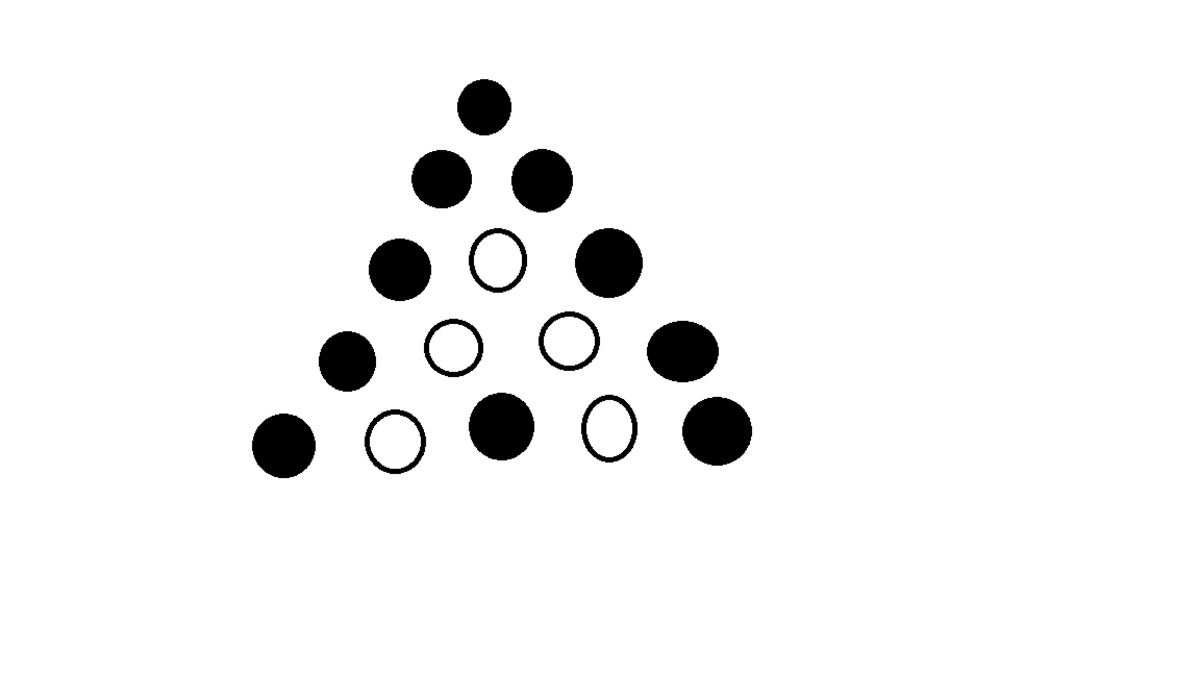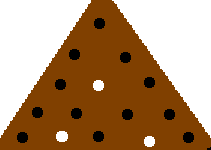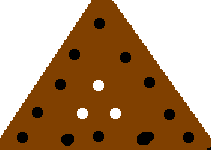How Eg-No-Ra-Moose Can You Be?

Joe is playing a game involving the above board. He places 14 pegs on the board, leaving a single space empty. He then jumps a peg with an adjacent peg. The peg that has been jumped is removed.
For example, if Joe jumped the bottom-left yellow peg with the bottom-left red peg, then he would need to remove the yellow peg and move the red one to the space above the blue, on the third row.
The game ends when no more moves are possible.
What is the maximum amount of pegs that can be left when the game is over?
Note : I am not asking what the maximum possible number of pegs without any possible moves is--you must be able to get to the position by playing the game.
This section requires Javascript.
You are seeing this because something didn't load right. We suggest you, (a) try
refreshing the page, (b) enabling javascript if it is disabled on your browser and,
finally, (c)
loading the
non-javascript version of this page
. We're sorry about the hassle.

I don't really have any proof that this is the minimum, but informally, it seems to be that the only other 'losing' positions obtainable with more than 10 pins are the two below, and by working backwards, it's easy to see that you can't get to them without 3 and 2 starting holes, respectively.
 EDIT:
Brute-force solution in python from a friend
EDIT:
Brute-force solution in python from a friend
https://repl.it/DN1h/1